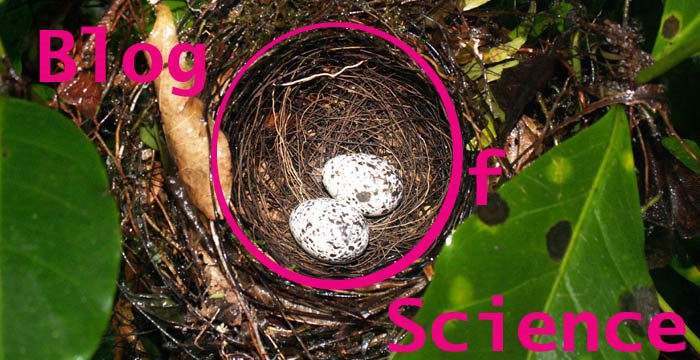The whole story is available here. The first two sentences:
On February 8, 1920, I spent the afternoon with my family at a point in Moraga Valley, Contra Costa County, California, some five miles, airline, northeast of Berkeley. My son Willard undertook to exercise the shotgun for the purpose of securing some specimens of local birds such as happened to be needed at the Museum.So ornately informal, so precisely vague, so informatively not-to-the-point, I am in love with this opening. No reputable journal would publish it these days, and that is a shame. He's storytelling, and quite well. The story strides on: Willard blasts a mated pair of Oak Titmice, both of whom have bright yellow breasts. Why bright yellow? Oak Titmice are grey, never yellow. Grinnell rushes the five airline miles back to Berkeley, marches into the botany department with his dead birds, and tells them to figure out what kind of yellow pollen these birds have got on them. Not pollen, say the botanists. Grinnell marches into a mycology lab and tells them to figure out what kind of yellow spores his birds have on their breasts. Maybe slime molds, hard to tell, say the mycologists. Grinnell concludes that possibly bird feathers could be an important means of dispersal in slime molds! He finishes by pointedly mentioning that if anyone is interested, these two birds "and their loads of spores, constitute Nos. 40,391 and 40,392 in the bird collection of the Museum of Vertebrate Zoology." He publishes the whole thing in The Auk, and that is the end of that, for almost a century. A century, by the way, is how long Grinnell said some of the MVZ's specimens might have to wait before they would be put to some as yet un-imagined use. It has been 97 years.
Which brings me to that wonderful word in Grinnell's title, "adventitious." It means something on the order of "acquired by chance" which is how those titmice presumably got their yellow, and how I came to the knowledge that in a drawer in Berkeley two spore laden titmice waited. What did I intend to do with this knowledge? Keep it in a drawer, until, perhaps after one hundred years, it proved valuable.
Now, I unexpectedly find myself with colleagues interested in spore dispersal ecology, and somebody mentioned spore dispersal via bird feathers. Which started me rummaging around in my dusty rusty musty gusty fusty drawers of ornithology, hunting for memory of birds with spores on them. All I remembered clearly was Willard undertaking to exercise the shotgun, but eventually (this morning) I found first memory, then paper, and shared both. And by afternoon my new mycology colleagues had requested access to Nos. 40,391 and 40,392 from my old ornithology colleagues at the MVZ, so that we can collect some of the long faded yellow dust. A little bit of molecular genetics wizardry (our lab is set up for sequencing DNA from dried fungal museum specimens) and we may finally be able to discover what made Grinnell's birds so yellow. If it is a new species of anything, we must surely name it after Willard.

